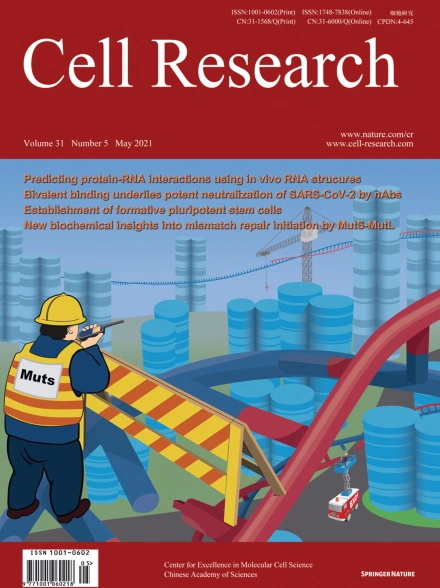
Advanced Search
Submit Manuscript
Advanced Search
Submit Manuscript
Volume 31, No 5, May 2021
ISSN: 1001-0602
EISSN: 1748-7838 2018
impact factor 17.848*
(Clarivate Analytics, 2019)
Volume 31 Issue 5, May 2021: 542-553 |
Mispair-bound human MutS–MutL complex triggers DNA incisions and activates mismatch repair
Janice Ortega1 , Grace Sanghee Lee2,3 , Liya Gu1 , Wei Yang3 , Guo-Min Li1,2,*
1Department of Radiation Oncology, University of Texas Southwestern Medical Center, Dallas, TX, USADNA mismatch repair (MMR) relies on MutS and MutL ATPases for mismatch recognition and strand-specific nuclease recruitment to remove mispaired bases in daughter strands. However, whether the MutS–MutL complex coordinates MMR by ATP-dependent sliding on DNA or protein–protein interactions between the mismatch and strand discrimination signal is ambiguous. Using functional MMR assays and systems preventing proteins from sliding, we show that sliding of human MutSα is required not for MMR initiation, but for final mismatch removal. MutSα recruits MutLα to form a mismatch-bound complex, which initiates MMR by nicking the daughter strand 5′ to the mismatch. Exonuclease 1 (Exo1) is then recruited to the nick and conducts 5′ → 3′ excision. ATP-dependent MutSα dissociation from the mismatch is necessary for Exo1 to remove the mispaired base when the excision reaches the mismatch. Therefore, our study has resolved a long-standing puzzle, and provided new insights into the mechanism of MMR initiation and mispair removal.
https://doi.org/10.1038/s41422-021-00468-y